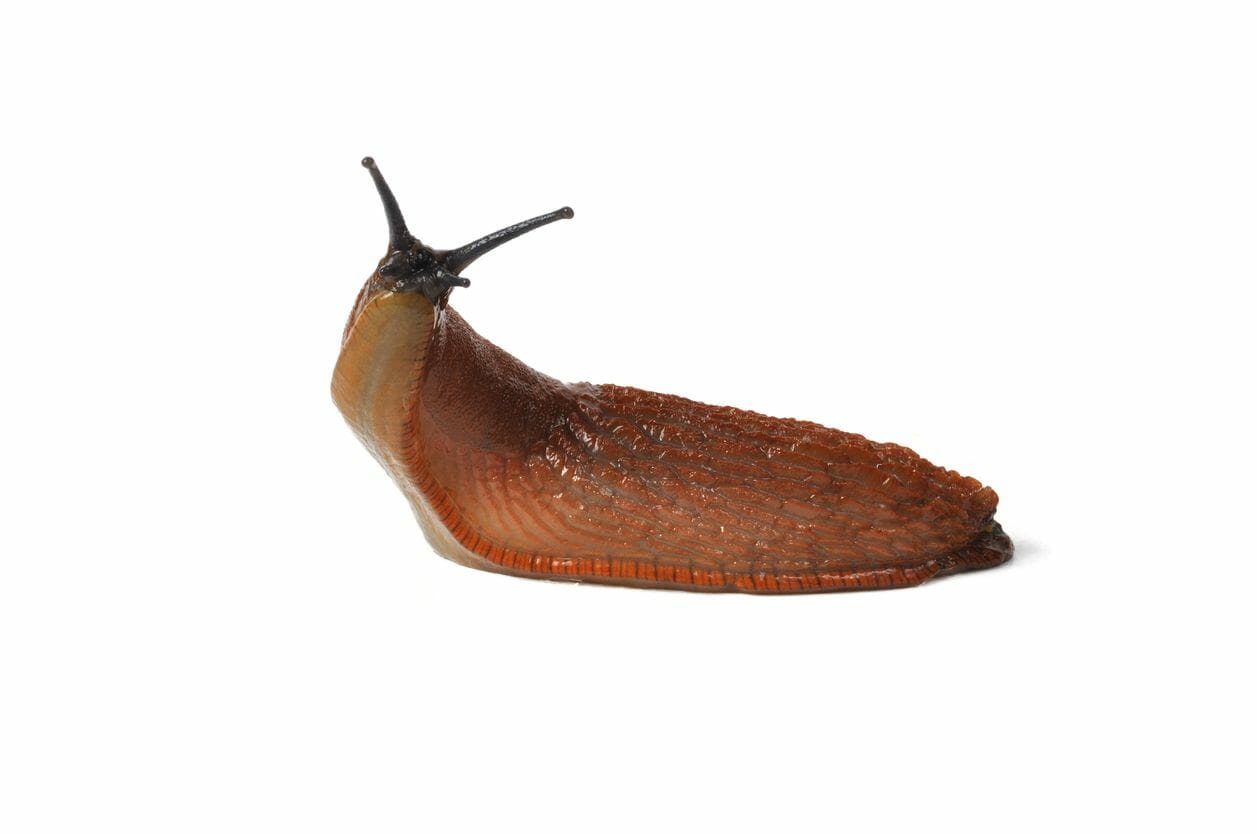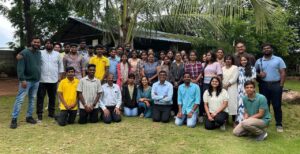Slugs are greedy guests on farms. Some estimates reckon a single slug is capable of killing up to fifty wheat seeds within one week of sowing. Nor is a slug ever single for long; as hermaphrodites, slugs are prolific breeders regardless of their relationship status, capable of self-fertilizing and laying hundreds of eggs in the space of a year. Hence farmers across the world consider slugs to be major agricultural and horticultural pests.
How farmers tend to fend off slug infestations, however, has caused wider problems. Current control methods rely on traditional chemical pellets, containing either metaldehyde or Iron (Ferric) phosphate. These have traditionally been used in large quantities, inflicting collateral damage on surrounding wildlife and leaching into nearby water supplies.
Regulators here in the UK, for instance, have been attempting to crackdown on metaldehyde, hoping to phase it out by the end of 2021. Other countries are mulling similar restrictions. That said, activists at the Metaldehyde Stewardship Group reckon the answer lies in more judicious use and forensic slug monitoring rather than outright bans, as they see alternatives as either ineffective or uneconomical. A popular alternative for higher-value crops like apples are bio-molluscicides, which are available in the form of nematode products. But nematodes, which can be deployed like an army of tiny killer worms, are still too pricey for use in arable crops where they’d need to be blanketed over entire fields repeatedly throughout the season.
Arise, Sir Slugbot!
Could a robot be a way to deploy more affordable amounts of those nematodes, providing precision detection and targeted treatment? The team behind the Slugbot seems to think so.
The Slugbot initiative, which has just received a grant from Innovate UK, is led by Dr Jenna Ross, an agripreneur academic and mollusc expert who operates out of one of the UK’s four agri-tech innovation centers. As her York-based center specializes in crop health and protection, it has acquired the cheery nickname of “CHAP.” Her role at CHAP now involves linking together the combined skills of the Small Robot Company (SRC), a British agrobotics company; COSMONiO, a British artificial intelligence start-up; and the Devon-based farming enterprise, Lee Farm Services, which will provide land for field trials and input from the farming community.
Phase one, the group of companies informed AFN, will focus on developing an AI slug detection capability, including multi-spectral imagery. Phase two will then look to deliver slug detection using Small Robot Company’s ‘Tom’ robot. This will use hyperspectral imagery and artificial intelligence to detect slugs both at scale and autonomously. Mobile imaging of slugs and field-surface materials in glasshouse conditions is anticipated by autumn 2020; the detection and mapping of slug infestations are anticipated to be delivered in-field in spring 2021. Phase three will then focus on the development of precision spraying, delivering an in-field slug treatment solution with SRC’s precision spraying ‘Dick’ crop-care robot prototype for autumn 2021.
Decoding a slug’s multispectral signature
In a phone interview with AFN, Ben Scott-Robinson of Small Robot Company expressed a preference for having a detection robot working in tandem with a spraying robot, but admitted time would be of the essence here.
“It might be that slugs, though they’re not incredibly quick movers, could be too quick,” he cautioned, and if so, his company would have to incorporate the detection, the mapping, and the spraying into one robot — a harder task to engineer; but that would be a decision taken at a later stage of product development, he said. “One of the reasons why we’re working with CHAP is so that we can get the full lab analysis of the multi-spectral signature of the slug,” he said, adding how important it would be to have a robot making its own accurate detection and mapping analysis in real-time. A slug control service, the company hopes, will be another phase in SRC’s ‘Dick’ crop-care robotic service, following its first commercial service to deliver non-chemical weeding. Working together in partnership with British start-up RootWave, Small Robot Company has already successfully completed development of its ‘Dick’ non-chemical weeding robot prototype to in-lab proof of concept stage, Technology Readiness Level (TRL) 4.0. An initial prototype of the non-chemical weeding will go into field trials in 2020, the team say, with the commercial weed zapping service anticipated to be available from autumn 2021.
What are your thoughts on the role of slug-slaying robots in agriculture? Let us know by dropping a note to [email protected]




